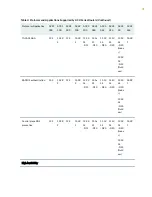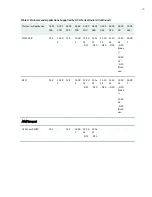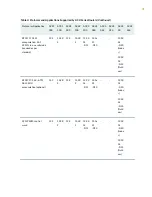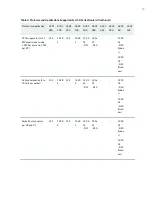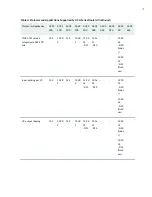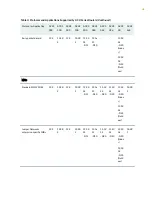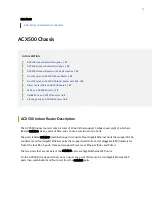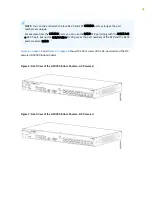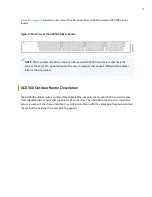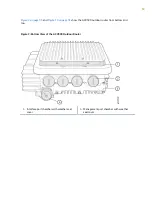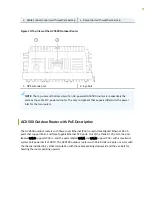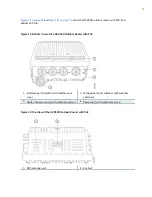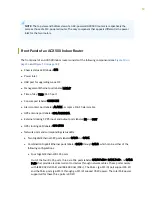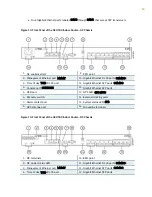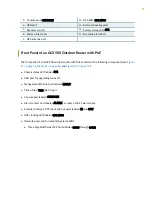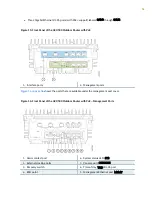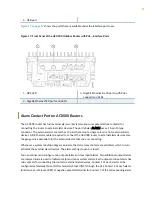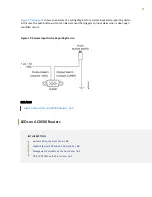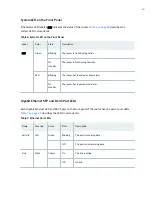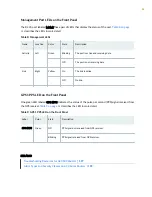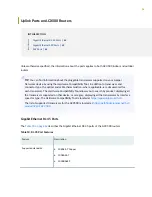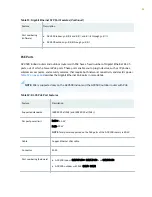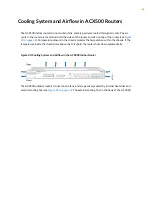
NOTE: The top view and bottom view of an AC-powered ACX500 router are respectively the
same as those of a DC-powered router. The only component that appears different is the power
inlet for the two routers.
Front Panel of an ACX500 Indoor Router
The front panel of an ACX500 indoor router consists of the following components (see
• Chassis status LED labeled SYS
• Power inlet
• USB port for upgrading Junos OS
• Management Ethernet port labeled MGMT
• Time of day (TOD) RJ-45 port
• Console port labeled CONSOLE
• Alarm contact port labeled ALARM—accepts a DE-15 alarm cable
• GPS antenna port labeled GPS ANTENNA
• External clocking 1 PPS input and output ports labeled IN and OUT
• GPS clocking LED labeled GPS 1PPS
• Network ports and corresponding status LEDs:
• Two Gigabit Ethernet SFP ports labeled 0/0/0 and 0/0/1
• Combination Gigabit Ethernet ports labeled 0/1/0 through 0/1/3, which can be either of the
following configurations:
• Four Gigabit Ethernet RJ-45 ports.
Out of the four RJ-45 ports, three are PoE ports labeled 0/1/0 PoE++, 0/1/1 PoE+ and 0/1/2
PoE+ that provide electrical current to devices through network cables. These ports comply
with IEEE 802.3af (PoE) and IEEE 802.3at (PoE+). The PoE++ (ge-0/1/0) port support 65 W,
and the PoE+ ports (ge-0/1/1 through ge-0/1/2) support 35 W power. The total PoE power
supported for these three ports is 80 W.
53

